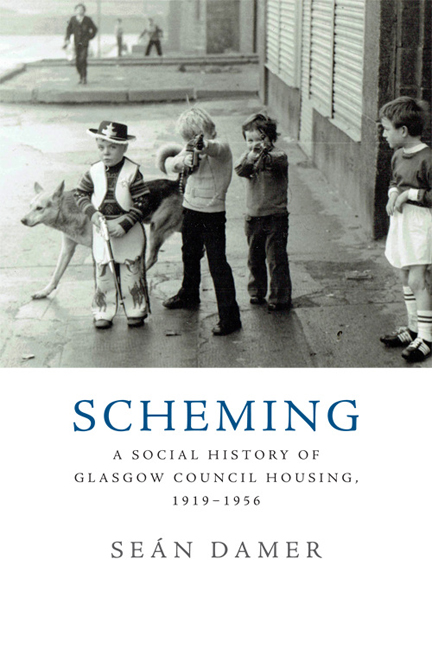Book contents
- Frontmatter
- Dedication
- Contents
- List of Tables and Figures
- Acknowledgements
- Preface
- 1 Introduction
- 2 Mosspark: Homes Fit for Heroes?
- 3 Hamiltonhill: A Pioneering Slum-Clearance Scheme
- 4 West Drumoyne: Blue-Collarland
- 5 Blackhill: Out of the Slums
- 6 Craigbank: Amateur Dramatics?
- 7 South Pollok: ‘The Bundy’
- 8 Alarums and Excursions
- Appendix 1 Balloting for a Council House
- Appendix 2 Methodological Notes
- Bibliography
- Index
3 - Hamiltonhill: A Pioneering Slum-Clearance Scheme
Published online by Cambridge University Press: 12 November 2019
- Frontmatter
- Dedication
- Contents
- List of Tables and Figures
- Acknowledgements
- Preface
- 1 Introduction
- 2 Mosspark: Homes Fit for Heroes?
- 3 Hamiltonhill: A Pioneering Slum-Clearance Scheme
- 4 West Drumoyne: Blue-Collarland
- 5 Blackhill: Out of the Slums
- 6 Craigbank: Amateur Dramatics?
- 7 South Pollok: ‘The Bundy’
- 8 Alarums and Excursions
- Appendix 1 Balloting for a Council House
- Appendix 2 Methodological Notes
- Bibliography
- Index
Summary
The Legislation
In its 1919 housing strategy, the Corporation of Glasgow had included limited plans for slum-clearance of its own volition. It was enabled to execute these plans under a little-known provision of the 1921 Housing Act. The main purpose of this Act was to abolish the generous subsidies of the 1919 Act, but it also provided an annual grant of £200,000 for the specific purpose of slum-clearances throughout the UK, a provision which seems to have been overlooked totally by both Bowley and Merrett in their studies of British housing legislation.
The portion allocated to Scotland was £30,000. Glasgow's share of this subsidy was £10,000, and it proceeded to construct four small ‘Rehousing’/‘Slum-Clearance’ (the terms were and are interchangeable in Glasgow) schemes at Hamiltonhill, Logan Street, Newbank and Yorkhill. The hierarchy in Glasgow's council housing can be grasped readily when it is realised that the Corporation was able to build four ‘Rehousing’ schemes for £10,000 while it spent £1.8 million on Mosspark.
In an interesting footnote to history, Glasgow Corporation (and, later, District Council) has consistently got the classification of Hamiltonhill wrong. In all three of its Housing Department's ‘Reviews of Operations’, and in its index of Glasgow District Council Schemes, Hamiltonhill is recorded as having been built under the provisions of the 1923 Housing Act – as indeed are the other three schemes. This is a curious error given that in its second ‘Review of Operations’ (1919–37), the date of the tender for Hamiltonhill is given as 3 July 1922.
Site Development
The Hamiltonhill site was quite literally tucked away from view, above the junction of the Forth & Clyde Canal with the branch that continued to the whisky bond at Port Dundas. It was developed very quickly. The Corporation Minutes show that the site – 13 acres at 3/3d per square yard – was acquired in April 1922; the layout of 348 houses was approved in May; and the tenders accepted by the end of July. There were 300 two-apartment and 48 threeapartment houses. The scheme was formally opened in June 1923. The bulk of its first tenants came from slum-clearance areas in the Cowcaddens, notably Muse Lane. This neighbourhood contained 650 people at the staggering density of 1,500 people per acre.
- Type
- Chapter
- Information
- SchemingA Social History of Glasgow Council Housing, 1919-1956, pp. 30 - 55Publisher: Edinburgh University PressPrint publication year: 2017



